Concerto No. 2 for Marimba and Percussion Orchestra
Marimba Feature
-
Ships in 3 to 4 weeks
Details
Description
SKU: CN.11855
Marimba Feature. Composed by Gillingham. Arranged by Nathan Daughtrey. Percussion Music. Score and parts. Duration 23:00. Published by C. Alan Publications (CN.11855).An intriguing, engaging, and challenging piece. Gillingham's "Concerto No. 2 for Marimba" is a must-try for all marimbists! The breakneck first movement sets a rapid pace for the turbulent musical passages throughout. Musical themes return in the second movement, but much slower with a delicate ensemble accompaniment. The lively third movement flirts with meter changes and mixed meter to create a sprightly feel to the movement leading to the solo cadenza and finale.
The "Concerto No. 2 for Marimba" is a commission by a consortium of schools and performers headed by Professor Marc Wooldridge of Northwestern College, Orange City, Iowa. The work exploits the full range of the technical and expressive ability of the five-octave concert grand marimba. It is cast in the standard three-movement format. The first movement uses sonata-rondo form and begins with a slow introduction and quasi-cadenza by the marimba. An animated first theme follows in G-minor accompanied by clarinets and tambourine. A contrasting second theme area follows featuring chromatic mediant progressions and descending chromatic lines. The return of the first theme utilizes a slightly different accompaniment. The development section reworks all the thematic material in different guises. The recapitulation presents the first theme, verbatim, as it was in the exposition. The second theme, however, changes the mode to major. The return alternates the marimba on the theme with the winds playing the theme in augmentation. The marimba quietly ends the movement with an ascending and descending arpeggiated passage. The second movement is a chaconne with eight variations. The marimba states a rather haunting chorale-like melody in Bb minor. The first variation features the low brass on the chaconne theme with the marimba on the variation. Variation II uses marimba, clarinet, bells, and vibraphone and Variation III uses marimba, oboe, and horns. Cascading muted brass against the augmented chaconne theme in the flutes and clarinets are indicative of Variation IV. Variation V changes the slow pace to fast using marimba, brass, timpani, and bells. A haunting Variation VI utilizes bowed marimba on the chaconne theme accompanied by piano and bells. Variation VII features the low brass on the chaconne theme against triplets in the upper brass. Rolled arpeggiated chords highlight Variation VIII along with a solo alto saxophone on the second half of the variation. A somber coda brings the movement to a close. The third movement, like the first, is in sonata-rondo design and is cyclic, bringing back and combining the thematic material of the first and second movements. The first theme, in D-minor, is angular and spirited, accompanied by clarinets and tambourine (reminiscent of Mvt. I). The second theme brings back the second theme of the first movement followed by the return of the first theme, now accompanied by saxophones and tambourine. The development combines and works thematic material from all three movements of the concerto. The recapitulation begins with the bassoons on the first theme, followed by the horns/trumpets and finally, the marimba. The second theme brings back the chaconne of the second movement, this time in major with the marimba accompanying using rhythmic material taken from the first theme of the third movement. There is no formal return of the first theme. Instead, the marimba plays a cadenza in which the first theme material and the second movement chaconne are developed. A galloping presto (coda) follows, ending the movement in D major. - David R. Gillingham PRAISE FOR THE CONCERTO "The new Concerto for Marimba by David Gillingham is an intriguing, engaging, and challenging piece. I had so much fun playing it and I am planning to perform it everywhere!! It is a "must-try" for all marimbists!" She-e Wu world-renowned solo marimba artist "Nathan Daughtry's percussion ensemble transcription of my Concerto for Marimba is absolutely masterful! Mr. Daughtrey has used a multitude of percussion colors to faithfully emulate the colors of the wind ensemble in a wonderful version of the concerto that will be accessible to fine percussion ensembles throughout the world." David R. Gillingham composer.
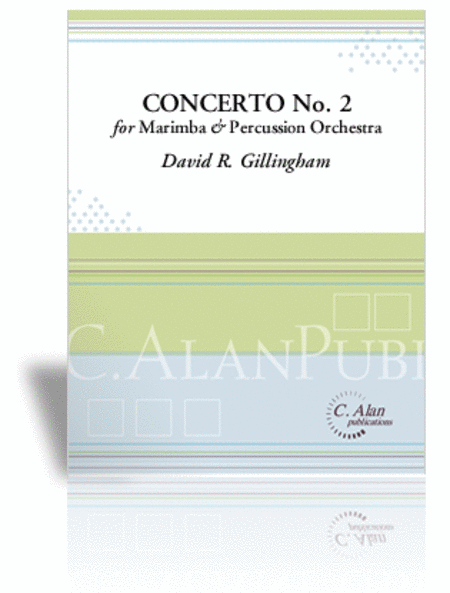
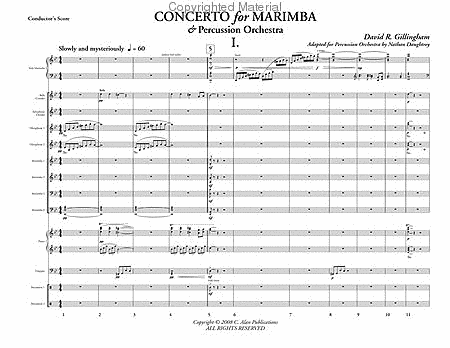
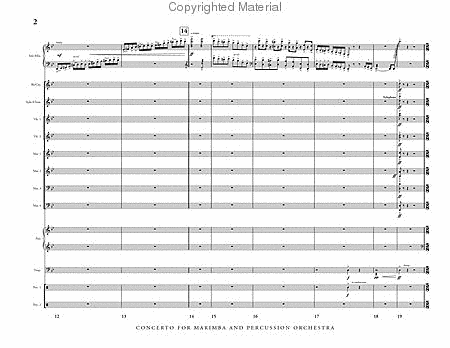
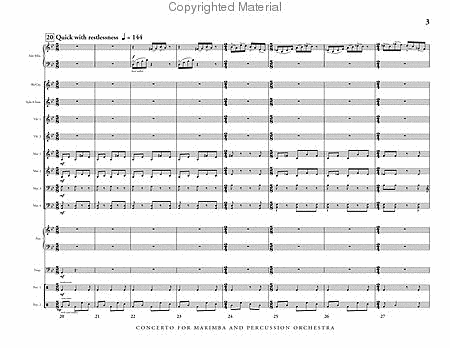
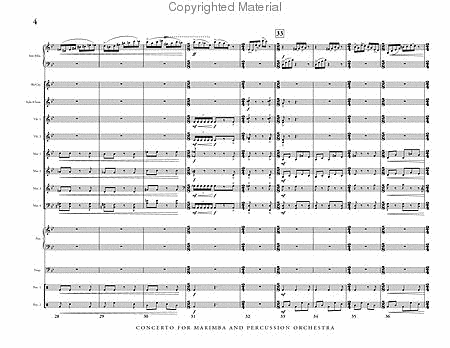
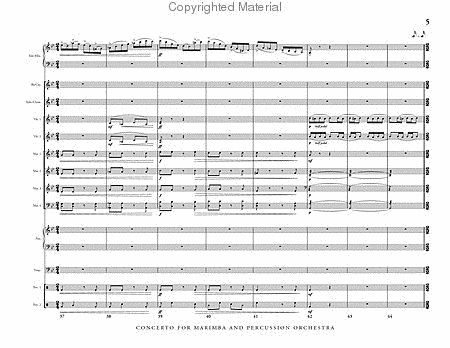
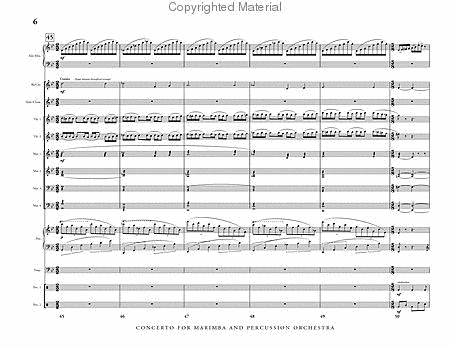
 Share
Share